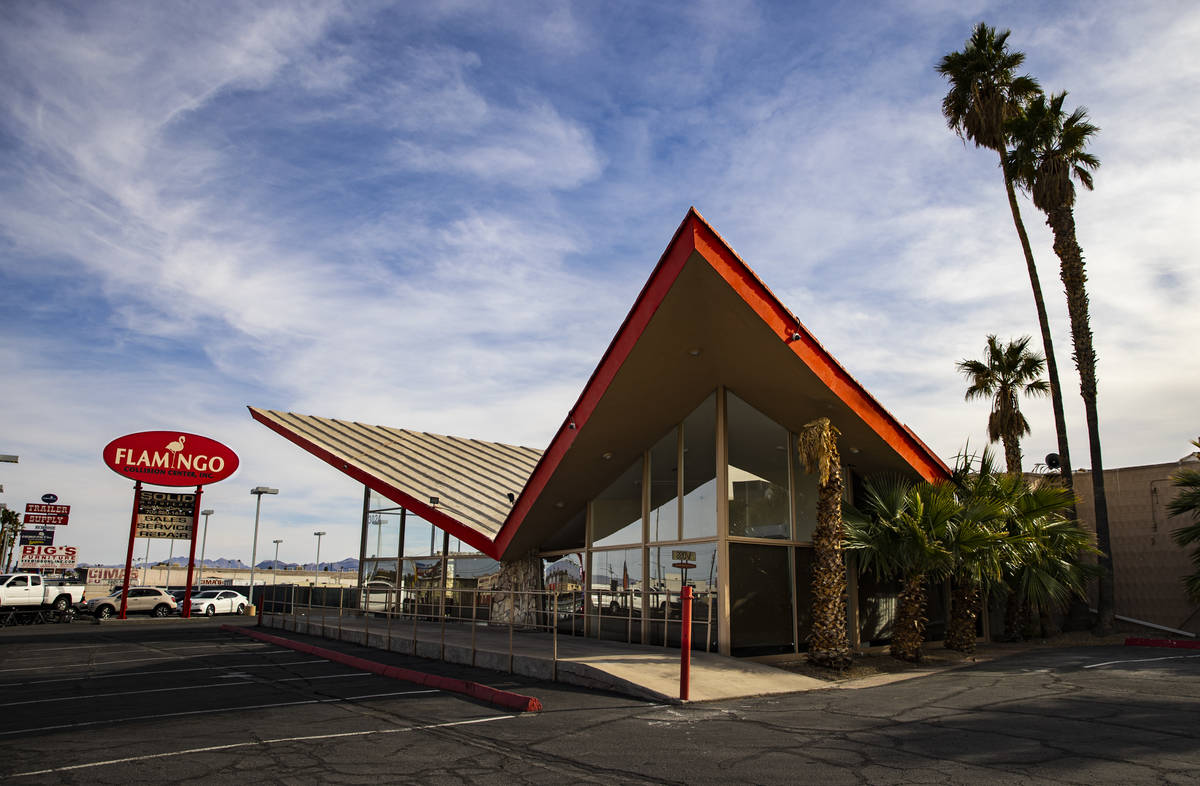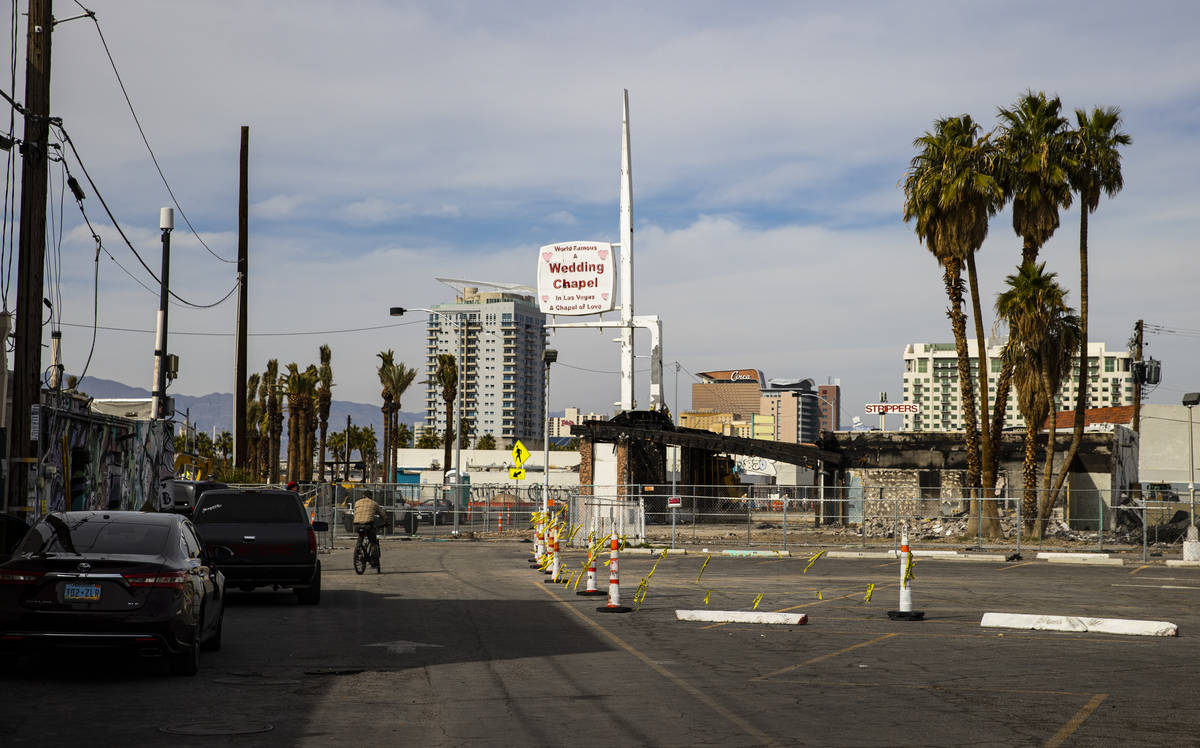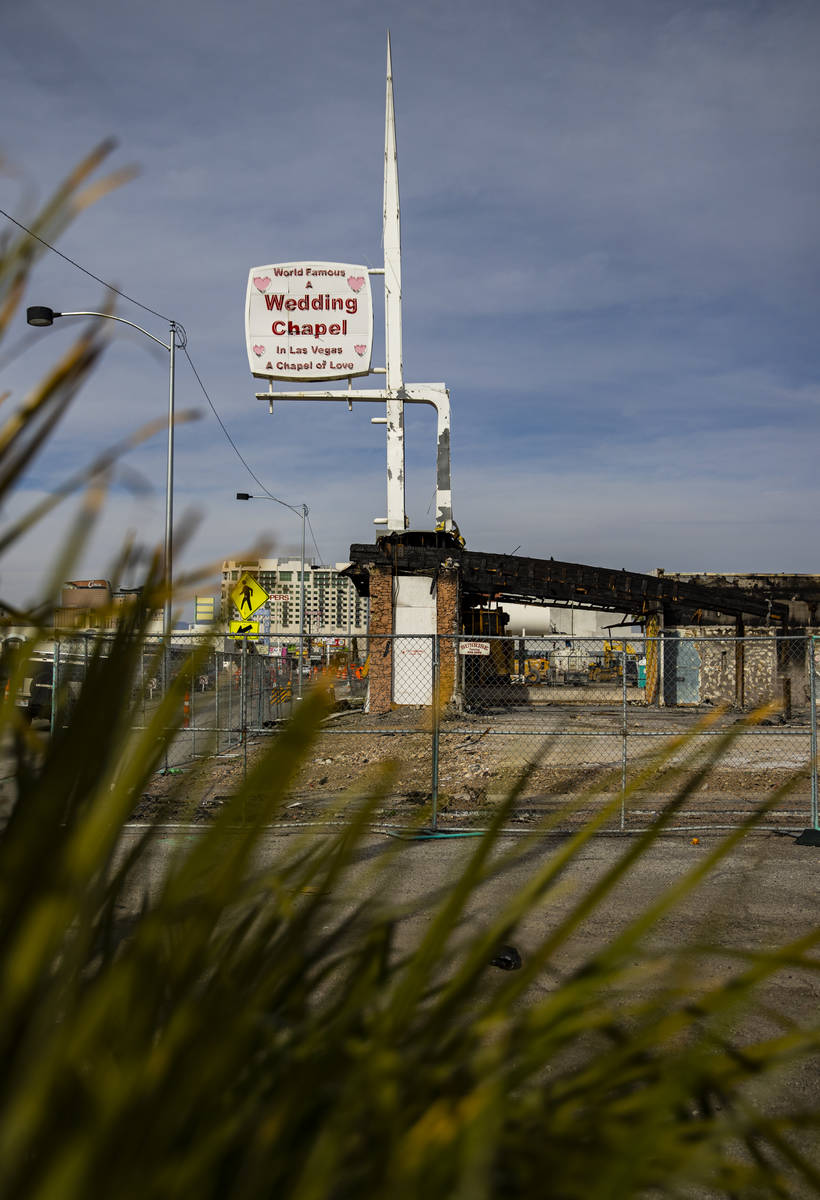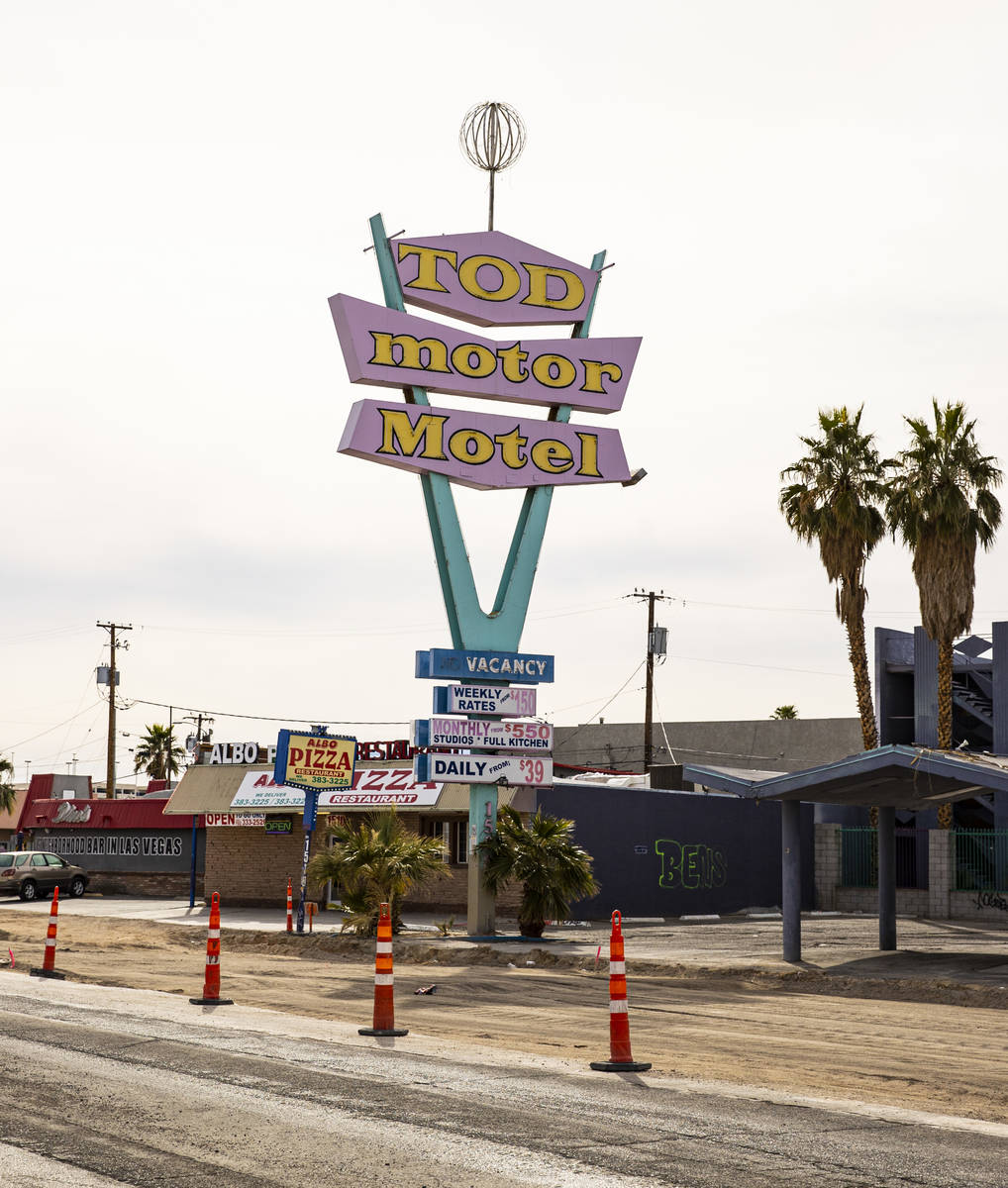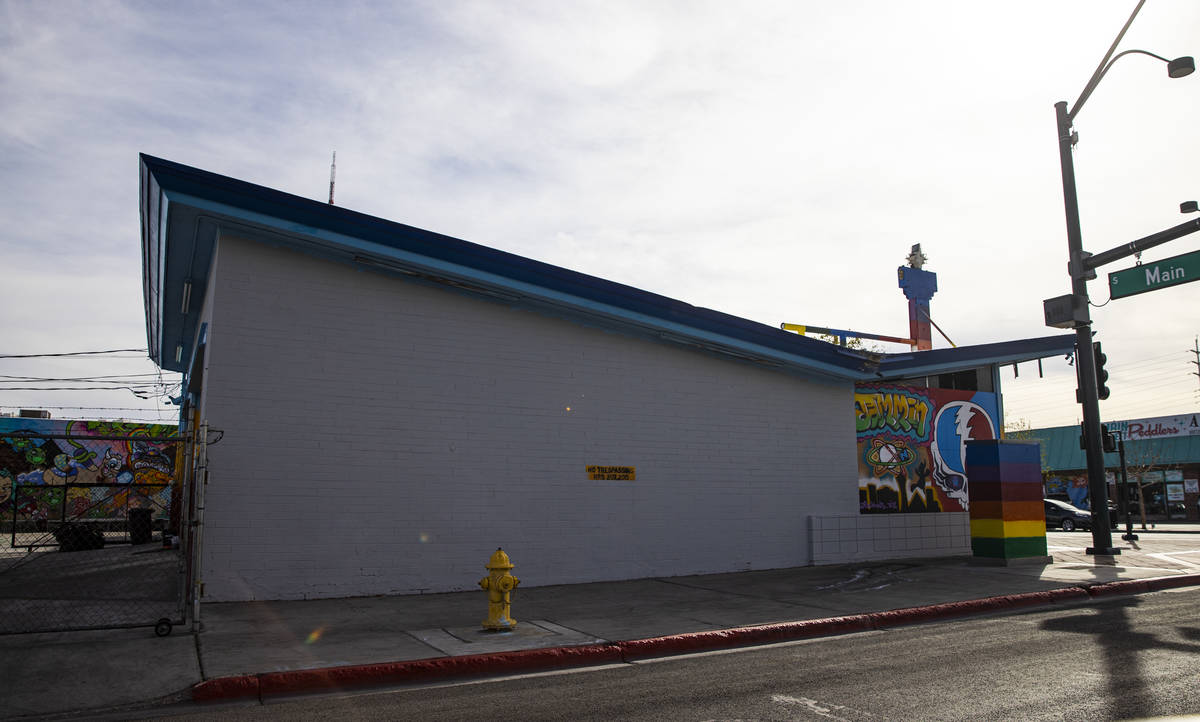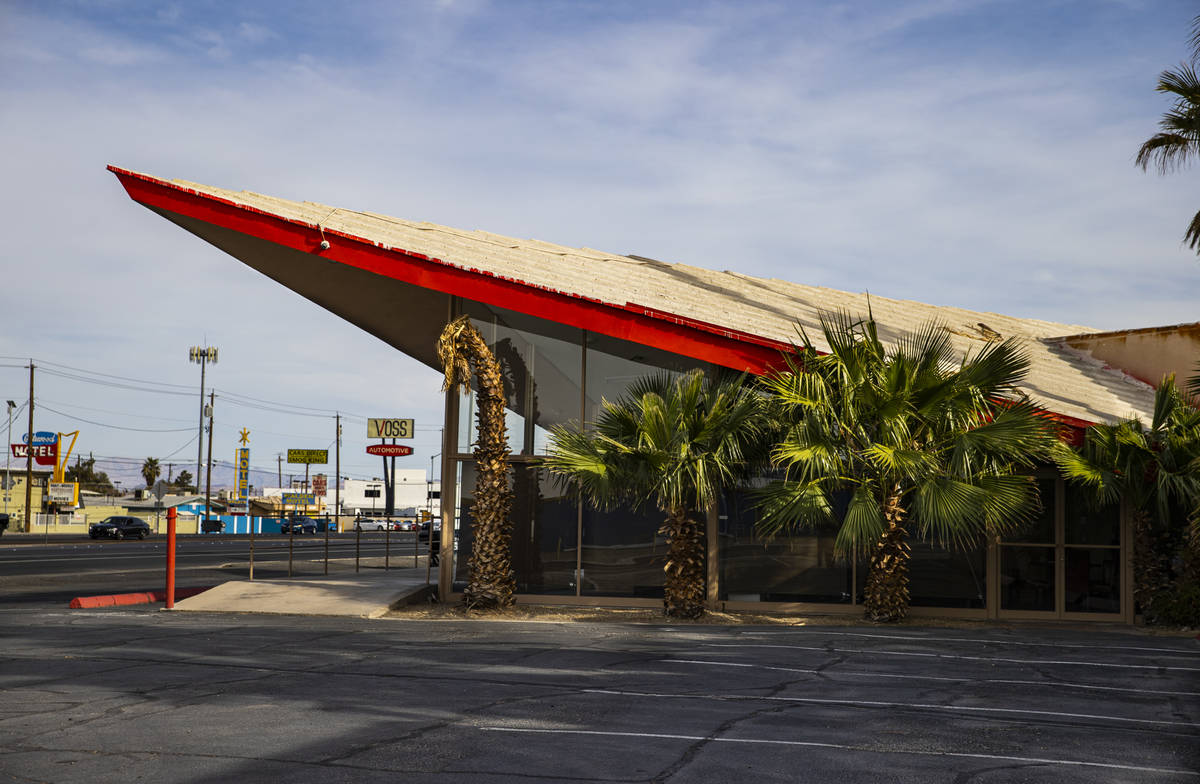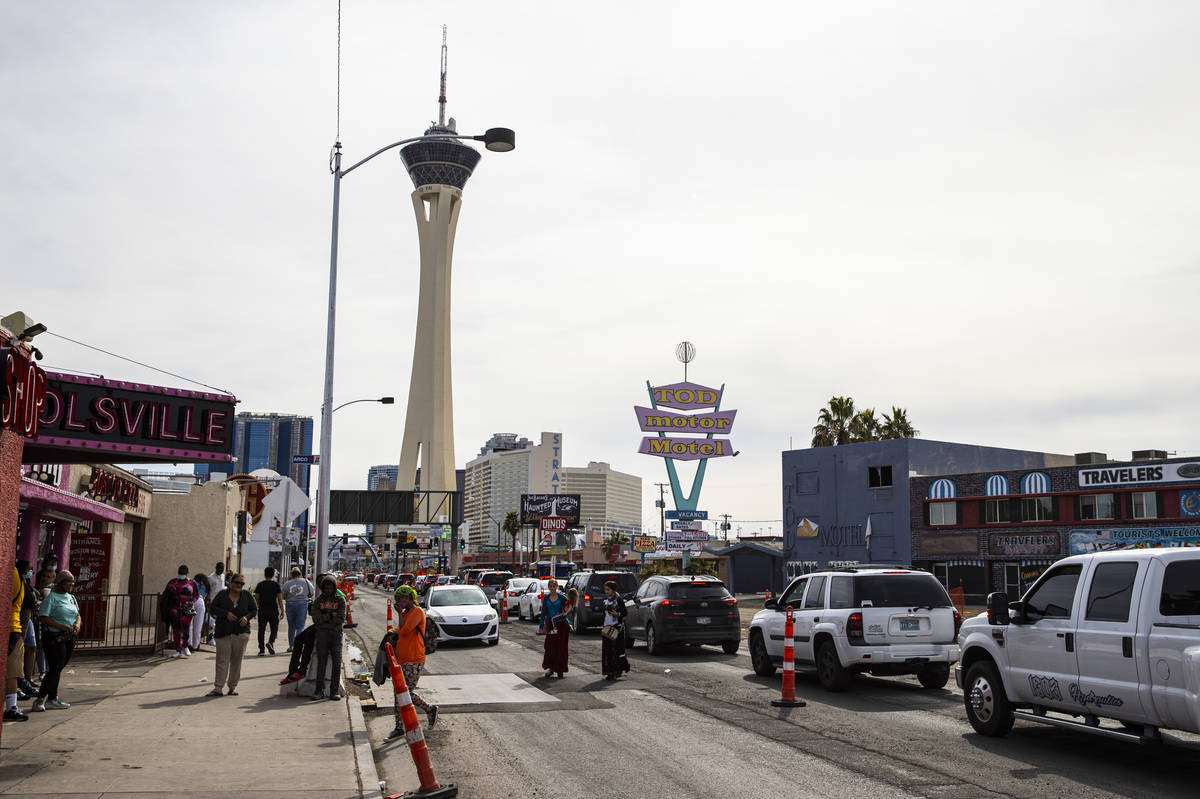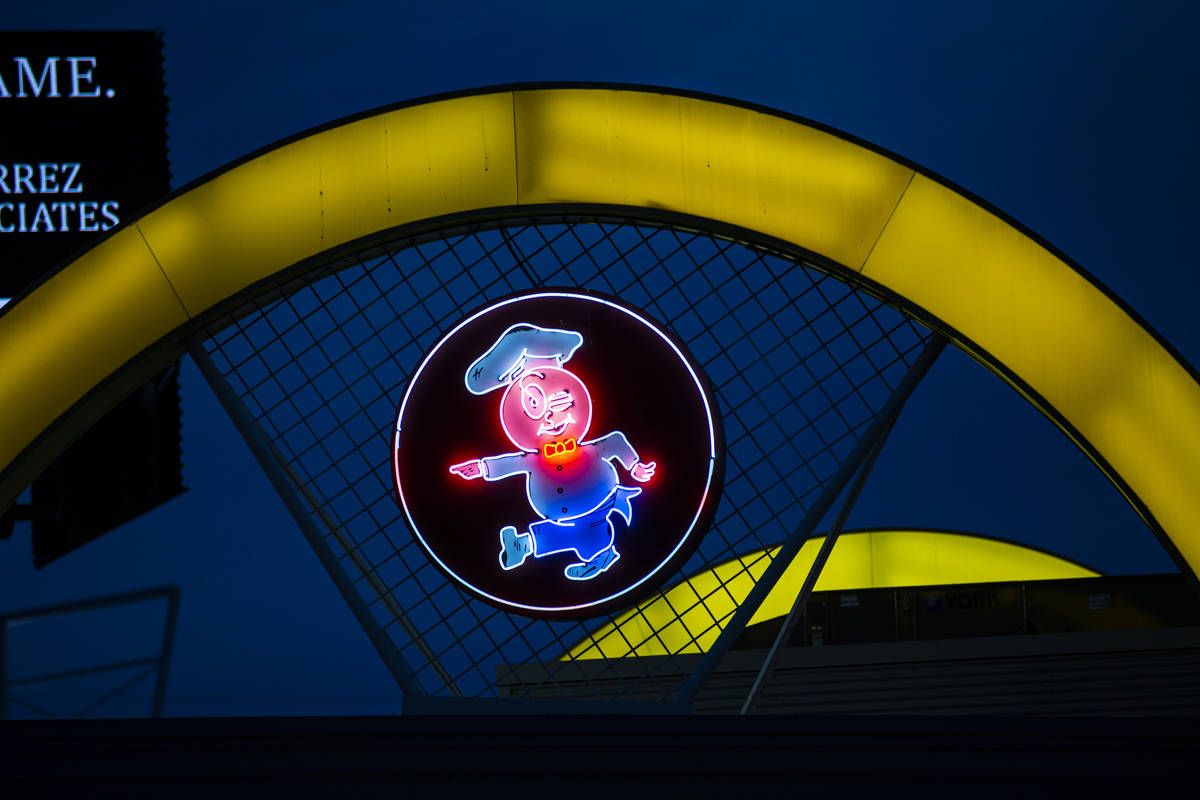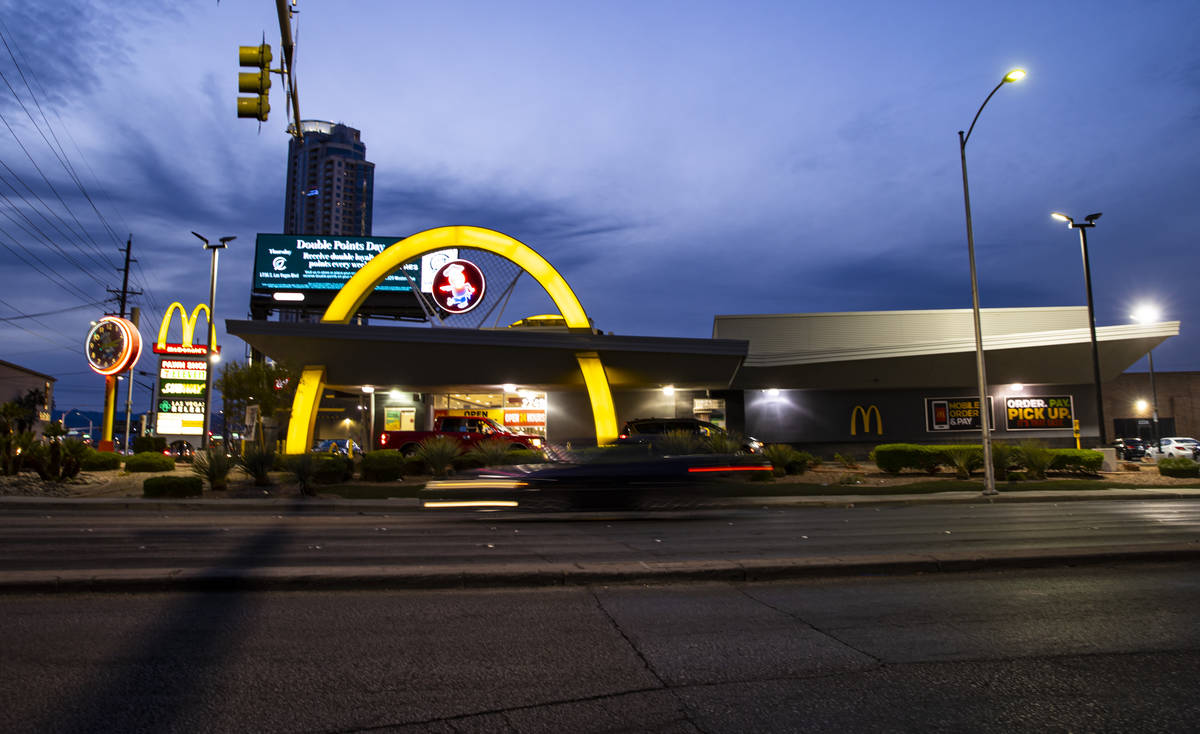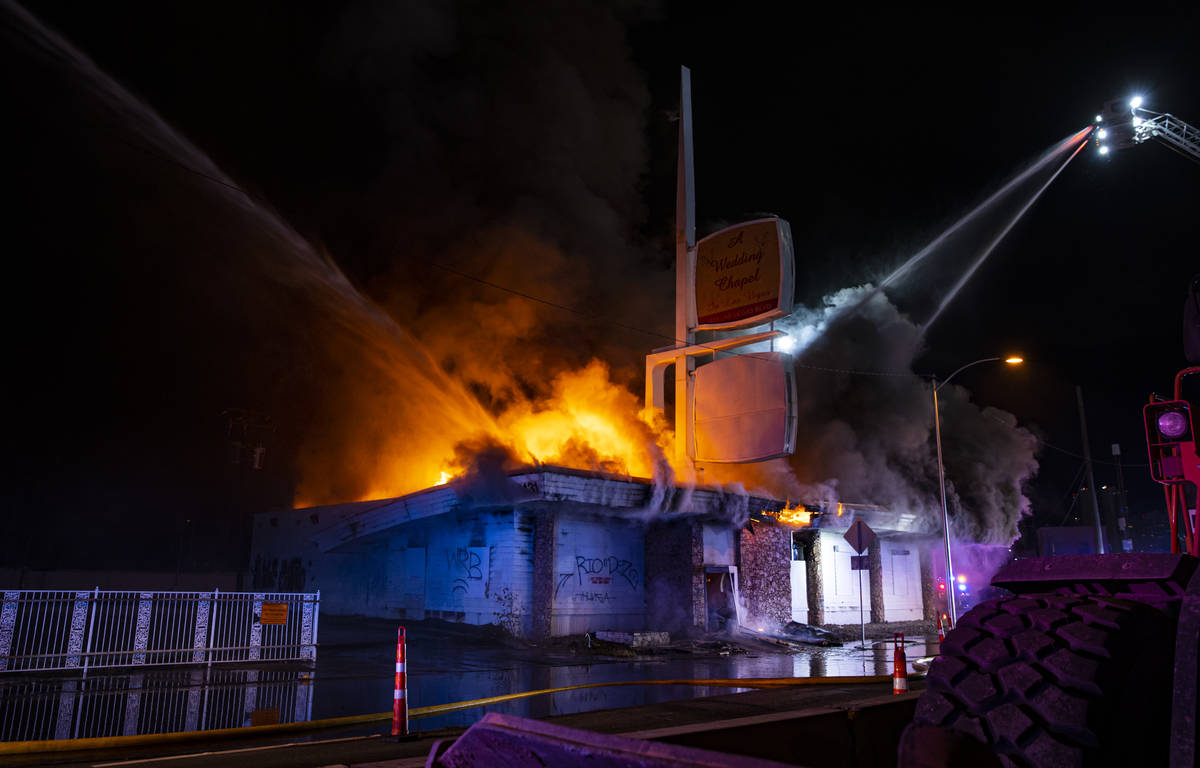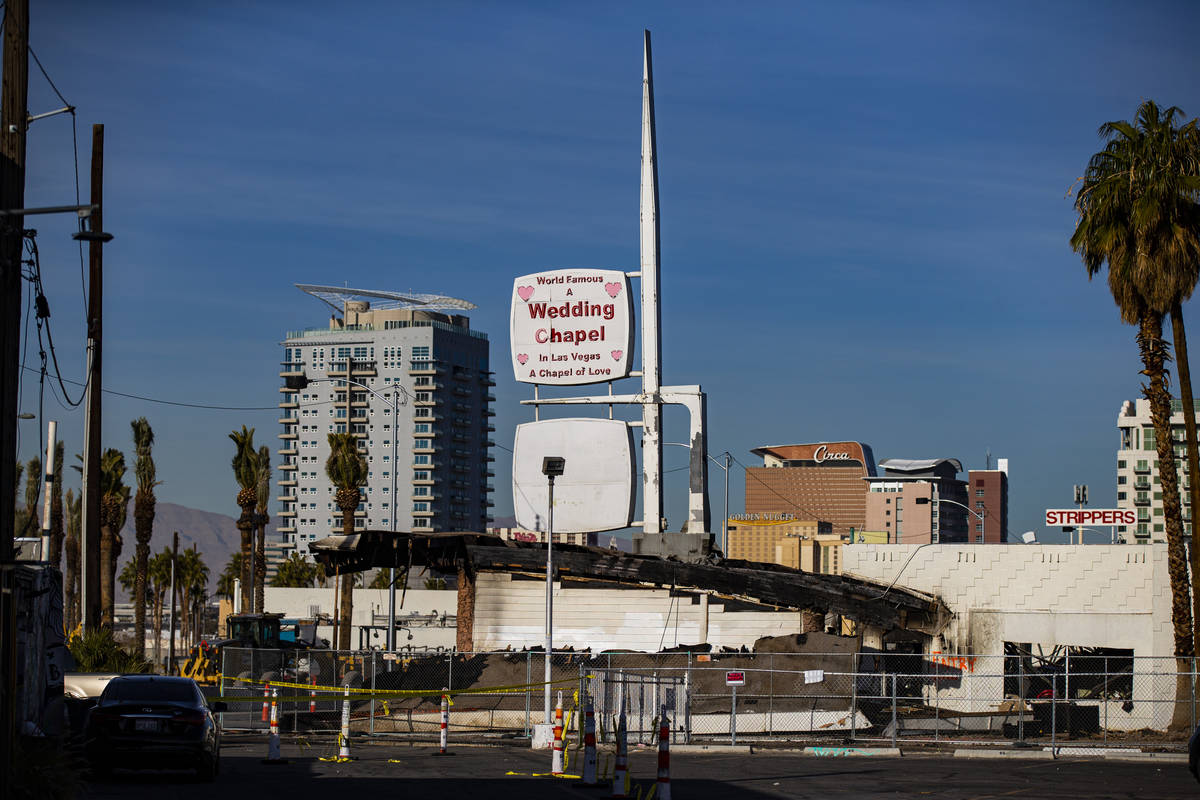Destroyed chapel was one of last remnants of futuristic Googie architecture
A shuttered wedding chapel that burned down in January is being remembered as one of the last remnants of futuristic architecture that once populated Las Vegas streets, from Boulder Highway to the Strip.
Googie architecture, known for its jutting angles and wall-to-wall windows, could be seen in the iconic former Stardust and is still recognizable in the “Welcome to Fabulous Las Vegas” sign and even a McDonald’s on Paradise Road near East Sahara Avenue.
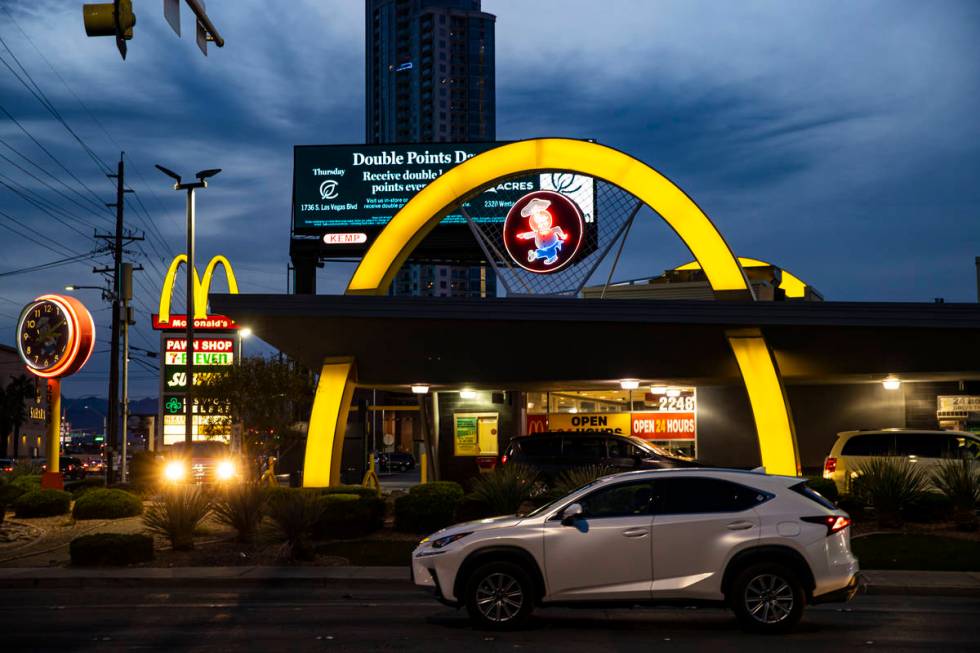
The Jan. 12 blaze at 1431 Las Vegas Blvd. South destroyed the Googie gem in downtown Las Vegas, originally built as a Bob’s Big Boy.
In its wake, investigators recovered the body of 30-year-old Steven Warren. Nearly two months later, the Las Vegas Fire Department announced March 8 that a second body had been recovered. Crews excavated the rubble last week, searching for any more victims as well as evidence as to what may have sparked the fire.
The damage was estimated at over $1 million and the insurance company continued to work with the fire department to investigate the cause of the fire Monday.
Googie architecture put a face to the space exploration that Americans were fascinated with between the 1940s and 1970s, according to Nevada Preservation Foundation Executive Director Cynthia Ammerman. The work was most often seen in the building of cafes, restaurants, car washes, motels and signs.
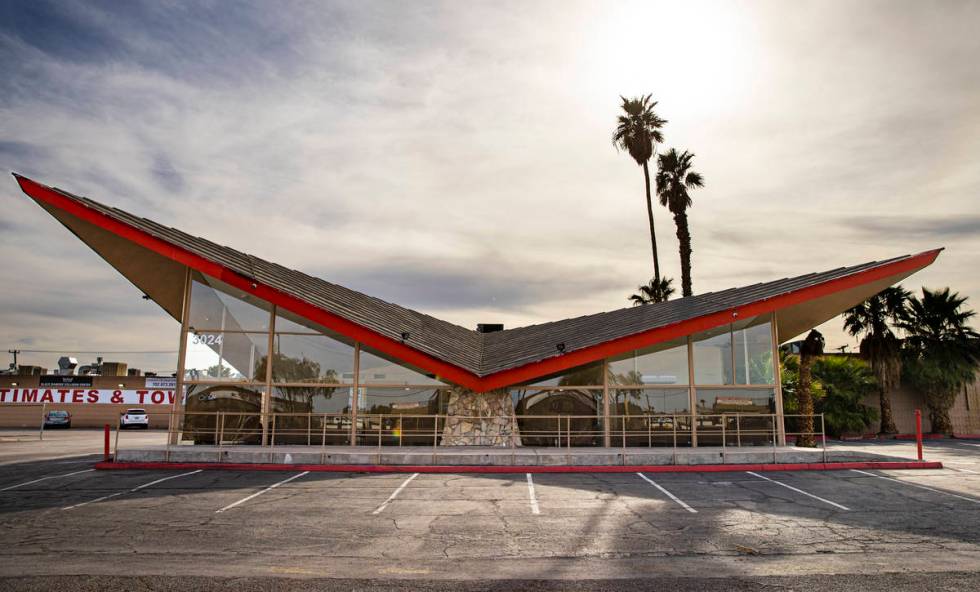
Ammerman said the Bob’s Big Boy turned wedding chapel was designed by Armet Davis &Newlove, a Santa Monica, California-based group of architects that advertises building restaurants, cafes and churches since 1947. On the company’s website, a sketch of the Googie-styled Romeo’s Times Square Restaurant in Los Angeles is featured on the front page.
“Think about what was going on at the time with the Space Age. The Jetsons are a Googie,” Ammerman said. “Strange geometric forms, anything you might think of that might be in the sky, or futuristic, is manifested.”
Bob’s Big Boy opened its first Las Vegas location at the now-burned-down building, which sat just north of East Oakey Boulevard, on Nov. 8, 1966. It was referred to as a Southern California favorite since 1937, with 450 locations and an infamous double-deck hamburger, according to a Review-Journal business section article from that month.
It was unclear from records when the Bob’s Big Boy was bought out, but by 1989 the restaurant had become a wedding chapel. After seven changes of ownership, the most recent owners filed for bankruptcy in September 2019. They closed A Wedding Chapel permanently, and in February, Stratorise LLC petitioned the court to pay debtors with the insurance money from the fire, according to court records.
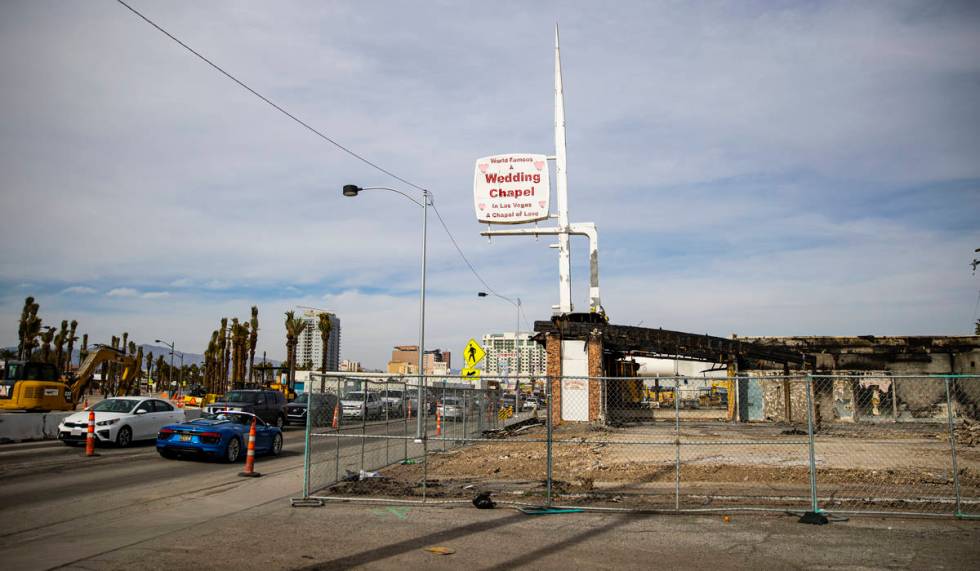
Ammerman said the Nevada Preservation Foundation did not have an updated record of the history for the building, which would include the cultural, political and historical significance of any building in town. The organization is working to catalog all of its building histories for the city of Las Vegas to see what other properties don’t have a documented record yet.
“Any building that has that kind of facade, the stone integrated with the streetscape as much as it does, and that creates the landscape, the way that (Las Vegas Boulevard) works with the historic buildings on the street — those are ideal buildings to preserve,” she said last week, disheartened by the loss of history. “That building had experienced adaptation and reuse in its life. We’re always in support of cheering on a building in its next life for a new use, a new purpose.”
Contact Sabrina Schnur at sschnur@reviewjournal.com or 702-383-0278. Follow @sabrina_schnur on Twitter.
Examples of Googie architecture in Las Vegas
— La Concha lobby at the Neon Museum, 770 Las Vegas Blvd. North
— Flamingo Collision Center, 3024 E Fremont St.
— Tacos Mexico, 1205 E. Charleston Blvd.
— 1500 E. Charleston Blvd.
— 1401 S. Main St.



